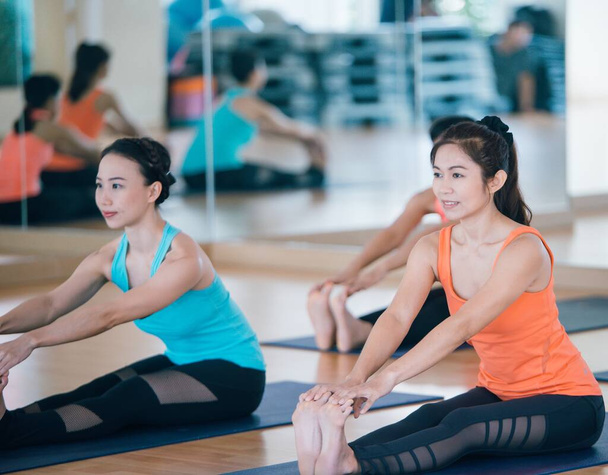Introduction
In today’s fast-paced world, finding moments of peace and tranquility can be challenging. However, yoga offers a pathway to inner calm and physical well-being. In this comprehensive guide, we will explore the joy of yoga poses, focusing on how beginners can start their journey towards a healthier and more balanced life. From understanding the basics of yoga to diving into specific poses, this guide will equip you with the knowledge and confidence to embrace yoga as a part of your daily routine.

Understanding the Essence of Yoga
Yoga is much more than just a physical exercise; it is a holistic practice that encompasses the mind, body, and spirit. Rooted in ancient Indian philosophy, yoga aims to unite the individual consciousness with the universal consciousness, fostering a sense of harmony and connection with oneself and the world around us. Yoga is a profound and multifaceted discipline that originated in ancient India and has since spread worldwide. At its core, yoga is a holistic system aimed at harmonizing the body, mind, and spirit. Understanding the essence of yoga requires delving into its various aspects:
Physical Practice (Asana):
This is perhaps the most visible aspect of yoga in the West. Asanas, or yoga postures, promote strength, flexibility, balance, and coordination. However, they are not merely exercises; they are a means to prepare the body for meditation and spiritual growth.
Breath Control (Pranayama):
Pranayama involves breath control techniques designed to regulate and enhance the flow of prana, or life force energy, in the body. Through conscious breathing, practitioners learn to calm the mind, increase vitality, and connect with their inner selves.
Meditation (Dhyana):
Meditation is central to yoga practice. It involves focusing the mind and cultivating mindfulness, inner peace, and self-awareness. Meditation techniques vary widely, ranging from simple breath awareness to complex visualization practices.
Philosophy (Yamas and Niyamas):
The philosophical framework of yoga is outlined in the Yoga Sutras of Patanjali. The first two limbs, yamas (moral restraints) and niyamas (observances), provide ethical guidelines for living a conscious and virtuous life. They include principles such as non-violence, truthfulness, contentment, and self-discipline.
Self-Realization (Samadhi):
The ultimate goal of yoga is self-realization or enlightenment, known as samadhi. It is a state of profound inner peace, unity, and transcendence, where the individual consciousness merges with the universal consciousness.
Service and Karma Yoga:
Karma yoga emphasizes selfless service and action performed without attachment to the results. By serving others and acting with compassion, practitioners cultivate humility, gratitude, and a sense of interconnectedness.
Devotion and Bhakti Yoga:
Bhakti yoga is the path of devotion and love for the divine. Through prayer, chanting, and rituals, practitioners develop a deep connection to a higher power and experience spiritual purification and surrender.
Knowledge and Jnana Yoga:
Jnana yoga is the path of wisdom and self-inquiry. It involves intellectual study, contemplation, and reflection on philosophical teachings to realize the true nature of the self and the universe.
Overall, the essence of yoga lies in the integration of physical, mental, and spiritual practices to cultivate harmony, self-awareness, and inner transformation. It is a journey of self-discovery, healing, and awakening that leads to greater peace, fulfillment, and connection with the world around us.
The Benefits of Practicing Yoga
Before delving into specific yoga poses, it’s essential to understand the myriad benefits that yoga offers. From improved flexibility and strength to reduced stress and anxiety, the positive effects of yoga extend far beyond the physical realm. Research has shown that regular yoga practice can also enhance mental clarity, promote better sleep, and boost overall well-being.
Improved Flexibility and Strength:
Yoga asanas (postures) involve stretching and strengthening various muscle groups, leading to increased flexibility, mobility, and muscle tone.
Enhanced Balance and Coordination:
Many yoga poses require balance and concentration, which helps improve coordination and proprioception (awareness of body position).
Stress Reduction:
Yoga incorporates mindfulness, breathwork, and relaxation techniques that can reduce stress levels, promote relaxation, and lower cortisol (stress hormone) levels.
Better Posture:
Regular practice of yoga can help improve posture by strengthening core muscles, aligning the spine, and increasing body awareness.
Increased Energy and Vitality:
Yoga practice stimulates circulation, boosts energy levels, and improves overall vitality and well-being.
Improved Breathing:
Pranayama (breath control) techniques practiced in yoga can enhance lung capacity, improve respiratory function, and promote deeper, more efficient breathing.
Enhanced Mental Clarity and Focus:
Yoga incorporates mindfulness practices that can improve concentration, mental clarity, and cognitive function.
Emotional Balance:
Yoga encourages self-awareness, emotional regulation, and introspection, helping individuals manage emotions, reduce anxiety, and cultivate a sense of inner peace.
Better Sleep:
Regular yoga practice has been linked to improved sleep quality and duration, making it beneficial for those struggling with insomnia or sleep disturbances.
Pain Relief:
Yoga can help alleviate chronic pain conditions such as lower back pain, arthritis, and migraines by promoting relaxation, reducing muscle tension, and improving flexibility
Boosted Immunity:
Some studies suggest that yoga practice may enhance immune function by reducing inflammation, improving circulation, and lowering stress levels.
Support for Mental Health:
Yoga has been shown to be beneficial for individuals dealing with depression, anxiety, PTSD, and other mental health disorders by promoting relaxation, self-awareness, and emotional regulation.
Social Connection:
Practicing yoga in a group setting or community can foster a sense of belonging, support, and connection with others.
Exploring Different Types of Yoga
Yoga is a diverse practice with various styles and approaches, catering to different preferences and goals. Some popular types of yoga include Hatha, Vinyasa, Ashtanga, Bikram, and Kundalini yoga. Each style has its unique emphasis, whether it’s on alignment, breath control, dynamic movements, or spiritual awakening. By exploring different types of yoga, you can find the one that resonates most with your needs and preferences.
Yin Yoga:
Yin yoga involves holding passive poses for an extended period (typically 3-5 minutes or more) to target the deeper connective tissues, such as ligaments, tendons, and fascia. It promotes relaxation, flexibility, and release of tension.
Restorative Yoga:
Restorative yoga focuses on relaxation and deep rest, using props to support the body in gentle, passive poses. It is designed to activate the parasympathetic nervous system, promoting stress relief, rejuvenation, and healing.
Jivamukti Yoga:
Jivamukti yoga integrates physical postures, breathwork, chanting, meditation, and ethical principles (such as ahimsa, non-violence) into a dynamic and spiritually-oriented practice. It emphasizes self-awareness, activism, and connection to the environment and all beings.
Power Yoga:
Power yoga is a dynamic and athletic style inspired by Ashtanga yoga, focusing on strength, endurance, and cardiovascular fitness. It typically involves a faster-paced sequence of poses with less emphasis on strict alignment.
These are just a few examples of the diverse range of yoga styles available. Each type offers unique benefits, so exploring different styles can help you find the practice that best suits your needs, preferences, and goals.
Getting Started: Tips for Beginners
If you’re new to yoga, getting started can feel intimidating. However, with the right mindset and approach, anyone can begin their yoga journey. Here are some tips for beginners:
Start Slow:
Don’t push yourself too hard, especially in the beginning. Listen to your body and gradually increase the intensity of your practice.
Focus on Breath:
Breath is central to yoga practice. Pay attention to your breath as you move through different poses, and let it guide your movements.
Use Props:
Props such as blocks, straps, and bolsters can help support your body and enhance your practice, especially if you’re not yet flexible.
Find a Qualified Instructor:
Attending classes led by experienced instructors can provide guidance and ensure that you’re practicing safely and effectively.
Be Patient:
Rome wasn’t built in a day, and neither is your yoga practice. Embrace the journey and celebrate your progress, no matter how small.
Essential Yoga Poses for Beginners
Now, let’s explore some fundamental yoga poses that are perfect for beginners:
Mountain Pose (Tadasana):
Stand tall with your feet hip-width apart, arms relaxed by your sides, and gaze forward. This pose helps improve posture and awareness of body alignment.
Downward-Facing Dog (Adho Mukha Svanasana):
Start on your hands and knees, tuck your toes, and lift your hips towards the ceiling, forming an inverted V shape. This pose stretches the hamstrings, calves, and shoulders while building upper body strength.
Child’s Pose (Balasana):
Kneel on the floor, sit back on your heels, and then lower your chest towards your thighs, extending your arms forward or resting them by your sides. Child’s pose is a relaxing posture that releases tension in the back, neck, and shoulders.
Warrior I (Virabhadrasana I):
Step one foot back and turn it slightly outward, while keeping your front foot facing forward. Bend your front knee, raise your arms overhead, and gaze up towards your hands. Warrior I strengthens the legs, opens the hips, and builds confidence and inner strength.
Tree Pose (Vrksasana):
Stand on one foot, with the sole of the other foot pressed against the inner thigh or calf of the standing leg. Bring your palms together at your heart center or extend your arms overhead. Tree pose improves balance, concentration, and mental focus.
Corpse Pose (Savasana):
Lie flat on your back, arms by your sides, palms facing up, and feet relaxed. Close your eyes and focus on deep, rhythmic breathing. Savasana is a restorative pose that promotes relaxation and integration of the benefits of your yoga practice.
Incorporating Yoga into Your Daily Routine
To fully experience the benefits of yoga, it’s essential to make it a regular part of your daily routine. Here are some tips for incorporating yoga into your lifestyle
Set Aside Time:
Carve out dedicated time each day for your yoga practice, whether it’s in the morning, during your lunch break, or before bed.
Create a Sacred Space:
Designate a quiet, clutter-free area in your home where you can practice yoga without distractions. Decorate it with items that inspire and uplift you.
Stay Consistent:
Consistency is key to progress in yoga. Even on days when you don’t feel like practicing, commit to showing up on your mat.
Mix It Up:
Keep your practice fresh and engaging by trying different styles of yoga, exploring new poses, or attending workshops and retreats.
Listen to Your Body:
Honor your body’s needs and limitations, and modify poses as necessary. Remember that yoga is a personal journey, and there’s no one-size-fits-all approach.
The Joy of Yoga: A Transformative Journey
As you continue to explore and practice yoga poses, you’ll discover that the true joy of yoga lies not only in the physical postures but also in the profound sense of connection, presence, and inner peace that it cultivates. Whether you’re seeking stress relief, improved flexibility, or spiritual growth, yoga offers a path towards greater self-awareness and fulfillment.
Conclusion
In conclusion, yoga is a powerful practice that has the potential to transform your life from the inside out. By embracing the joy of yoga poses and integrating them into your daily routine, you can embark on a journey of self-discovery, healing, and growth. Remember to approach your practice with an open heart and a curious mind, and let the transformative power of yoga unfold naturally. As you explore the depths of your being through yoga, may you find peace, balance, and joy in every moment.









